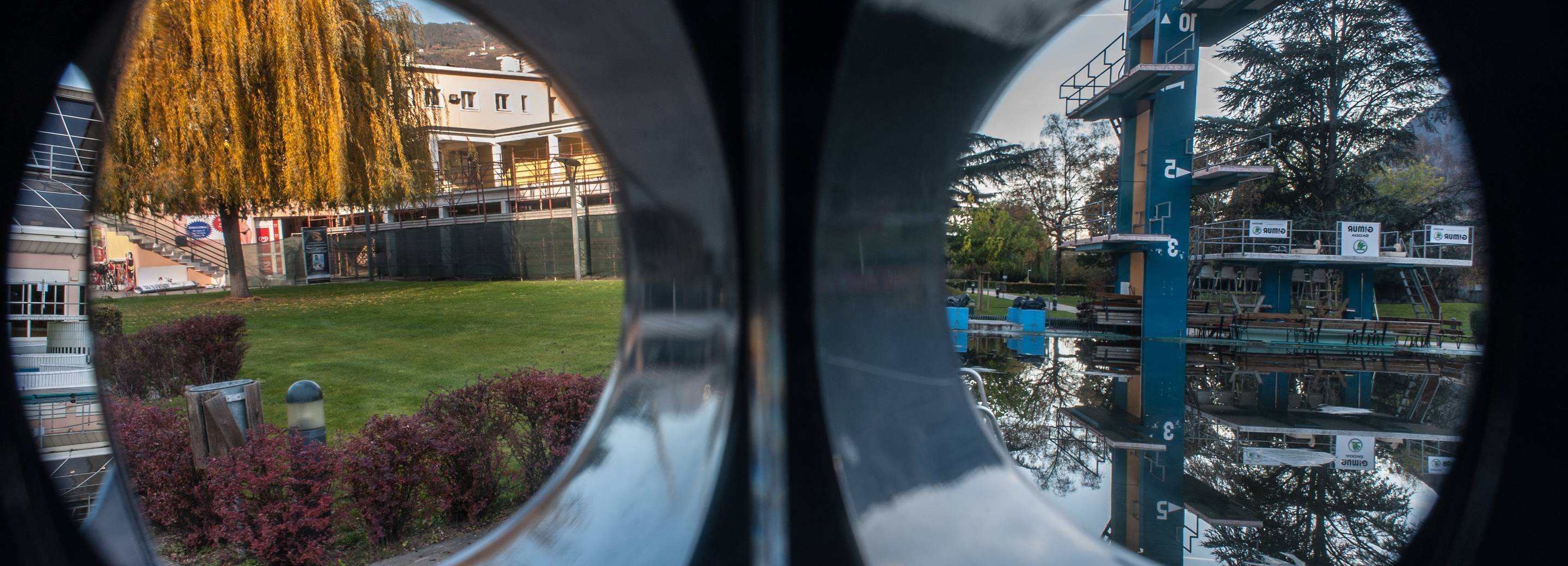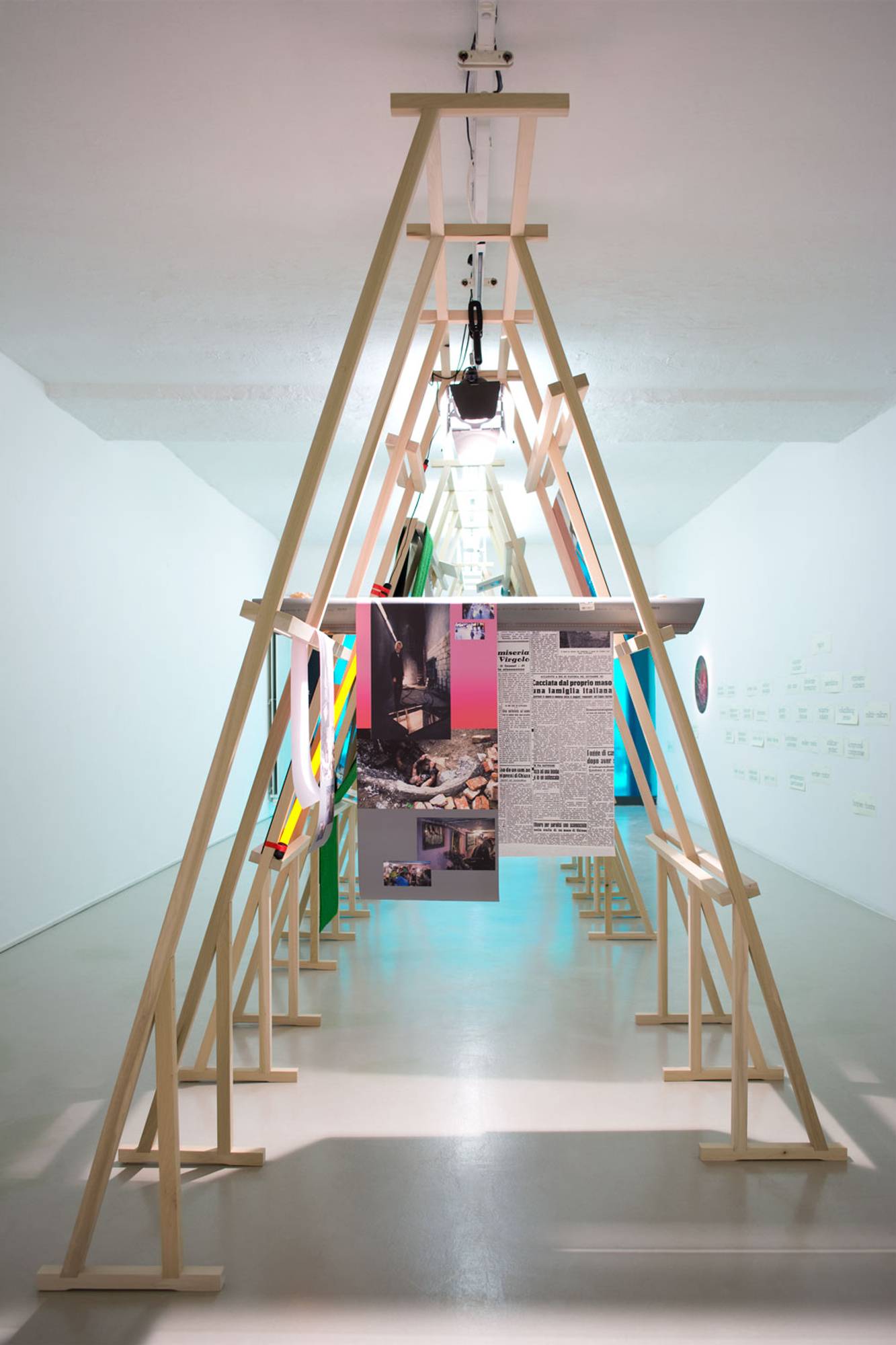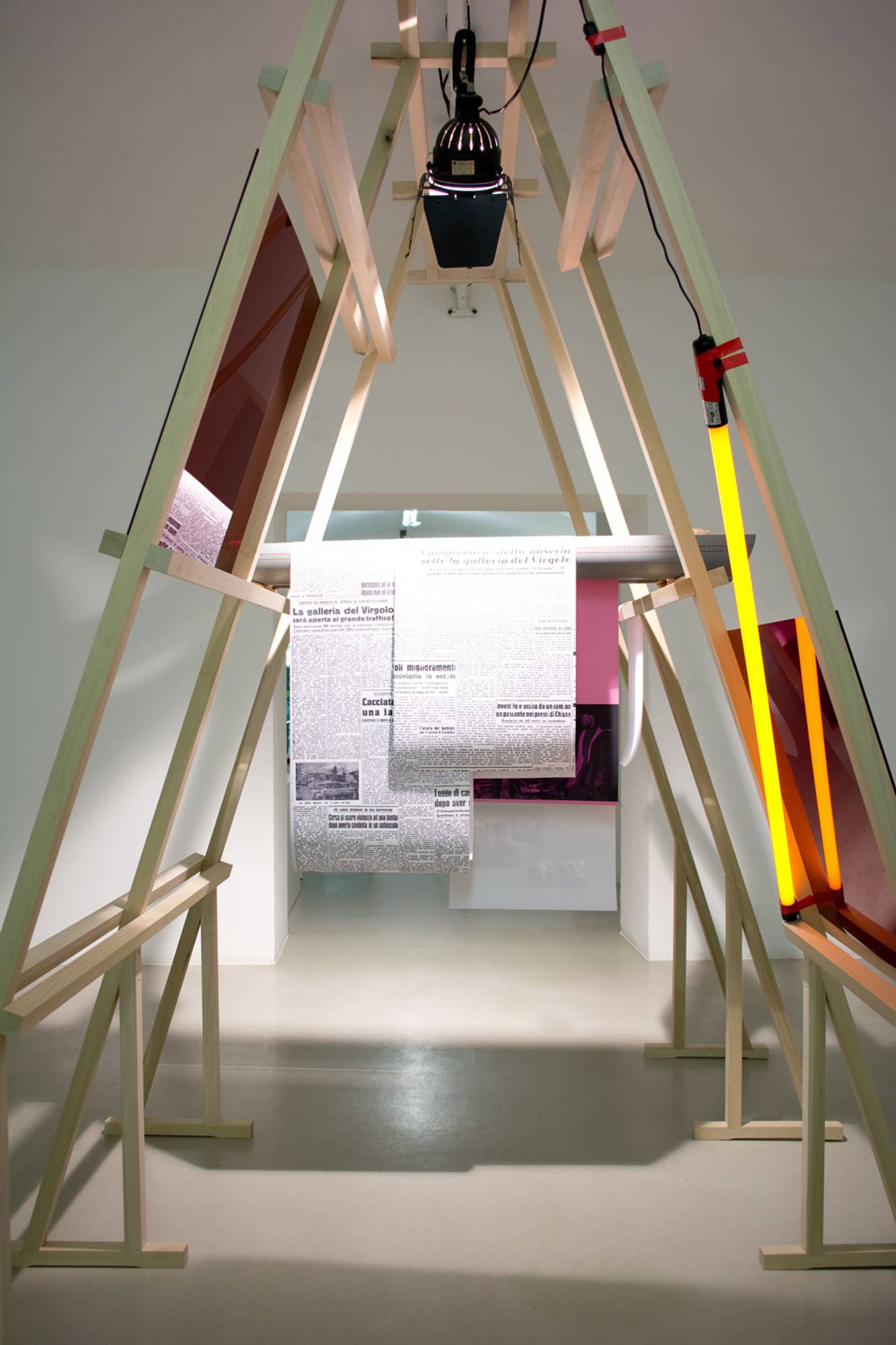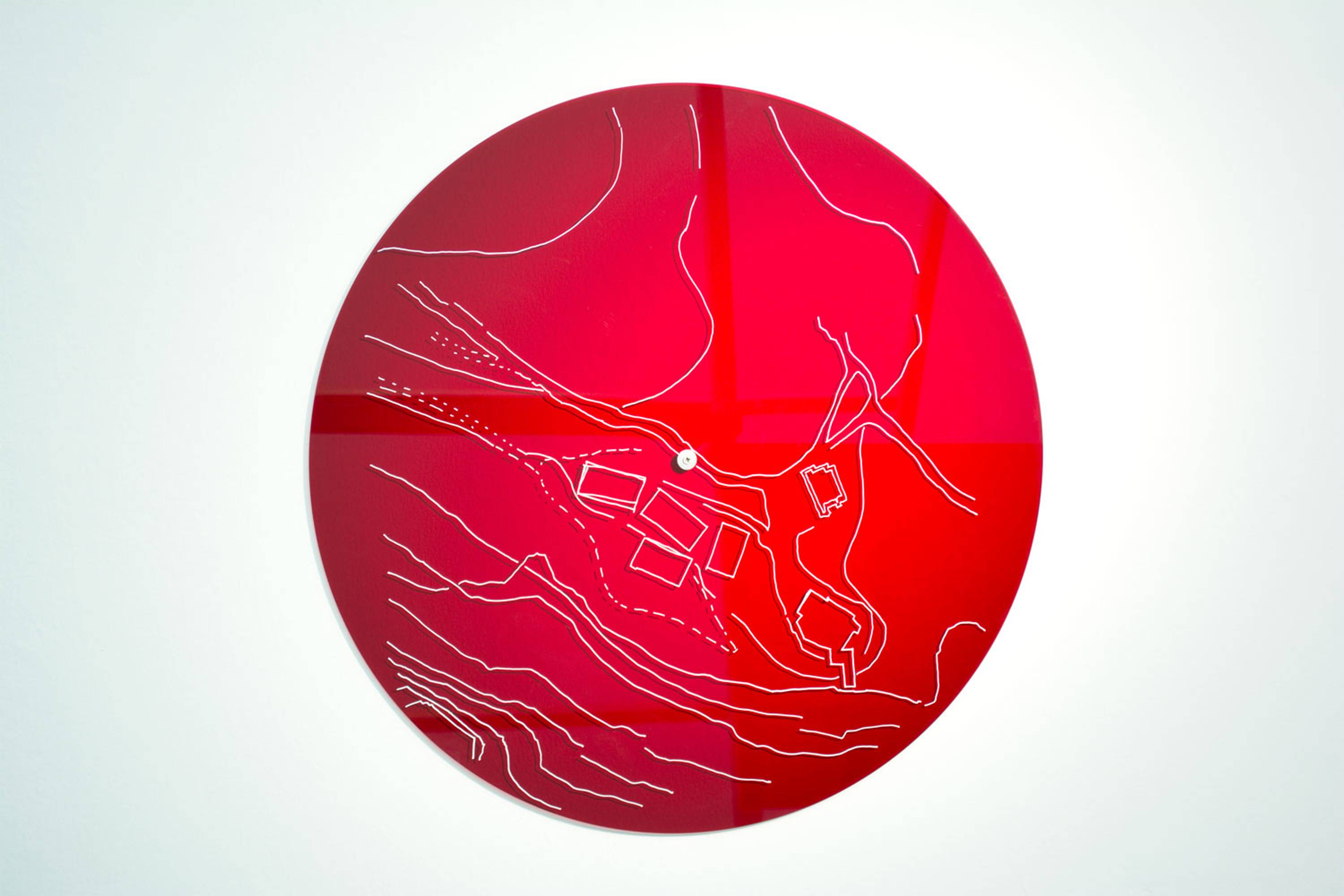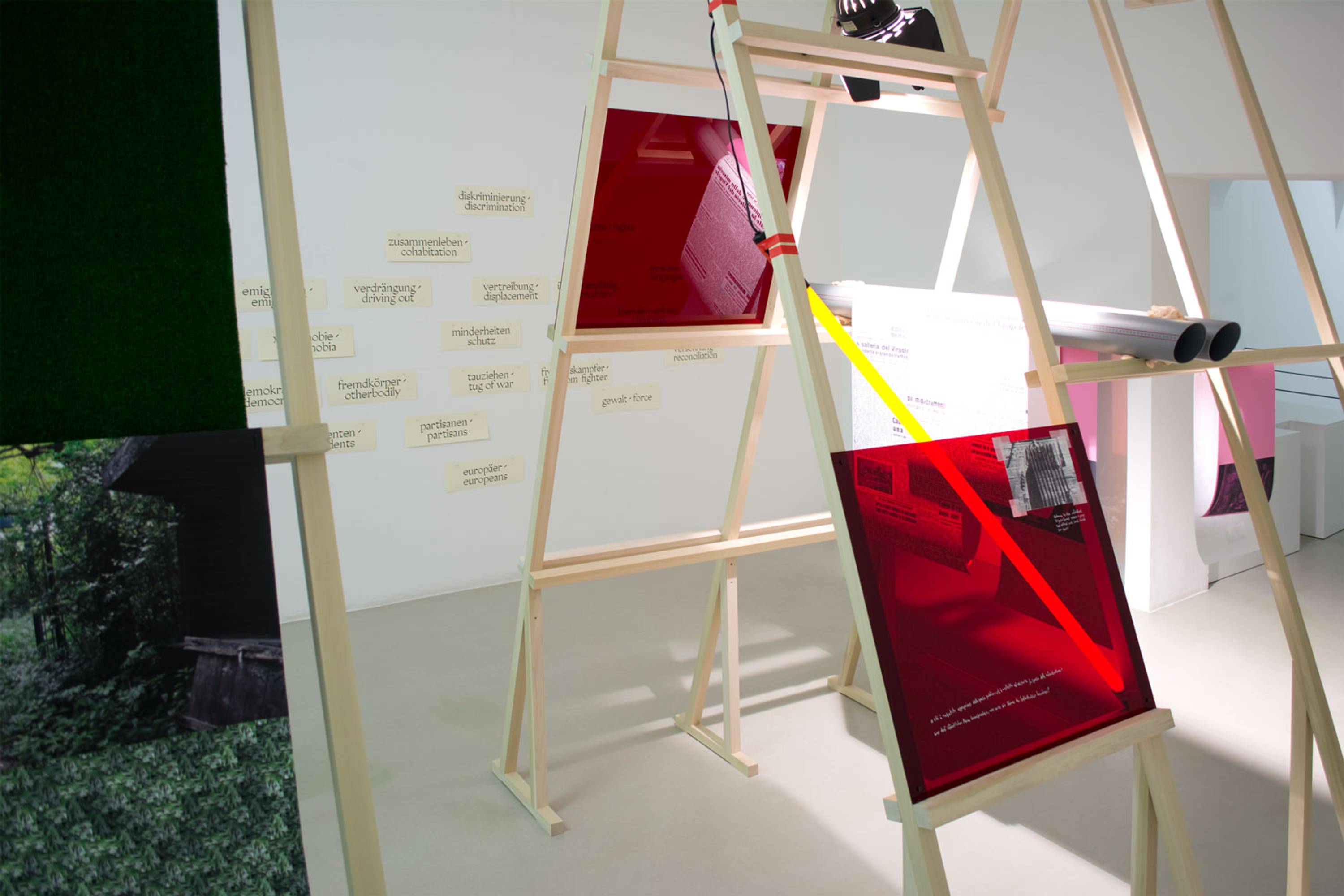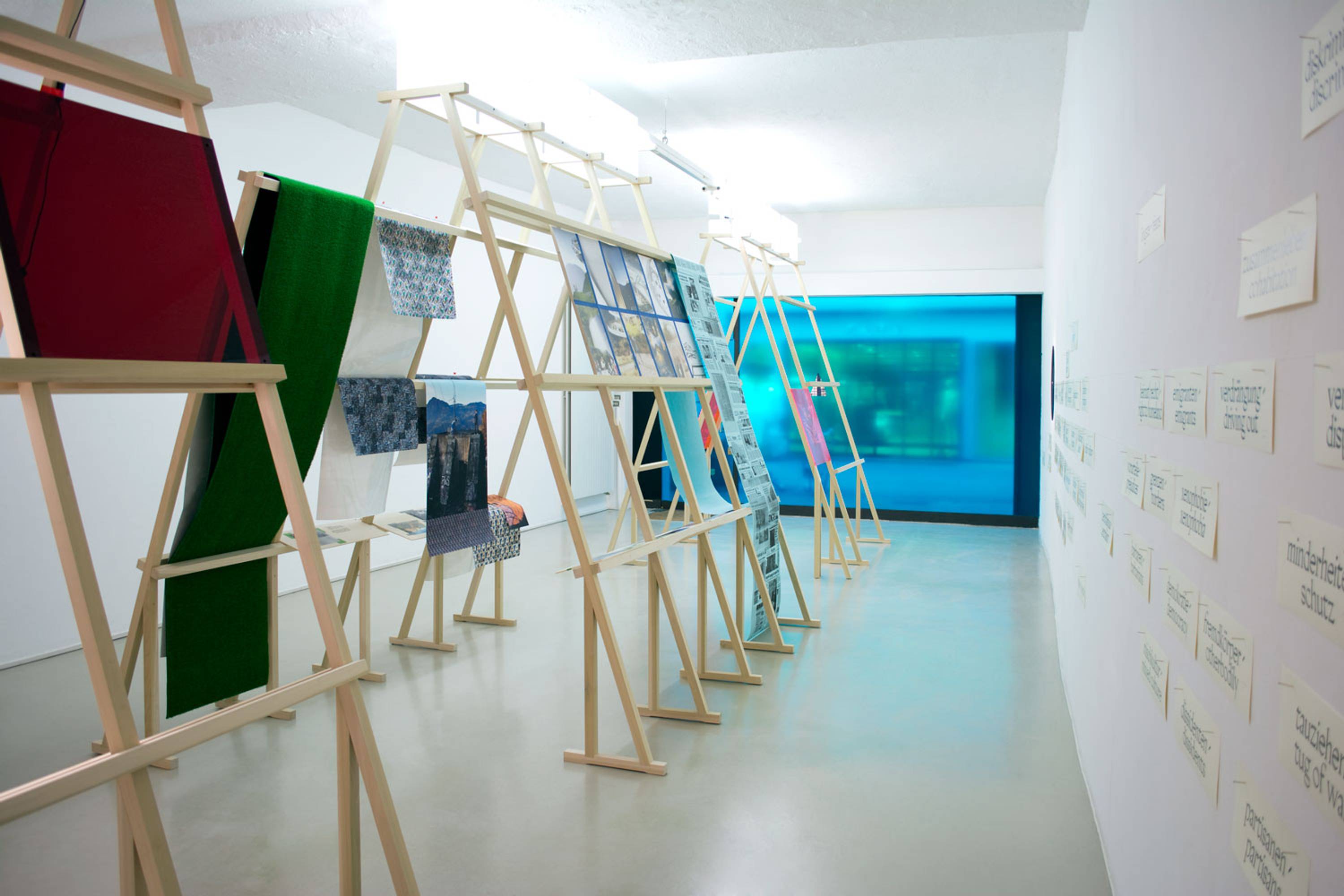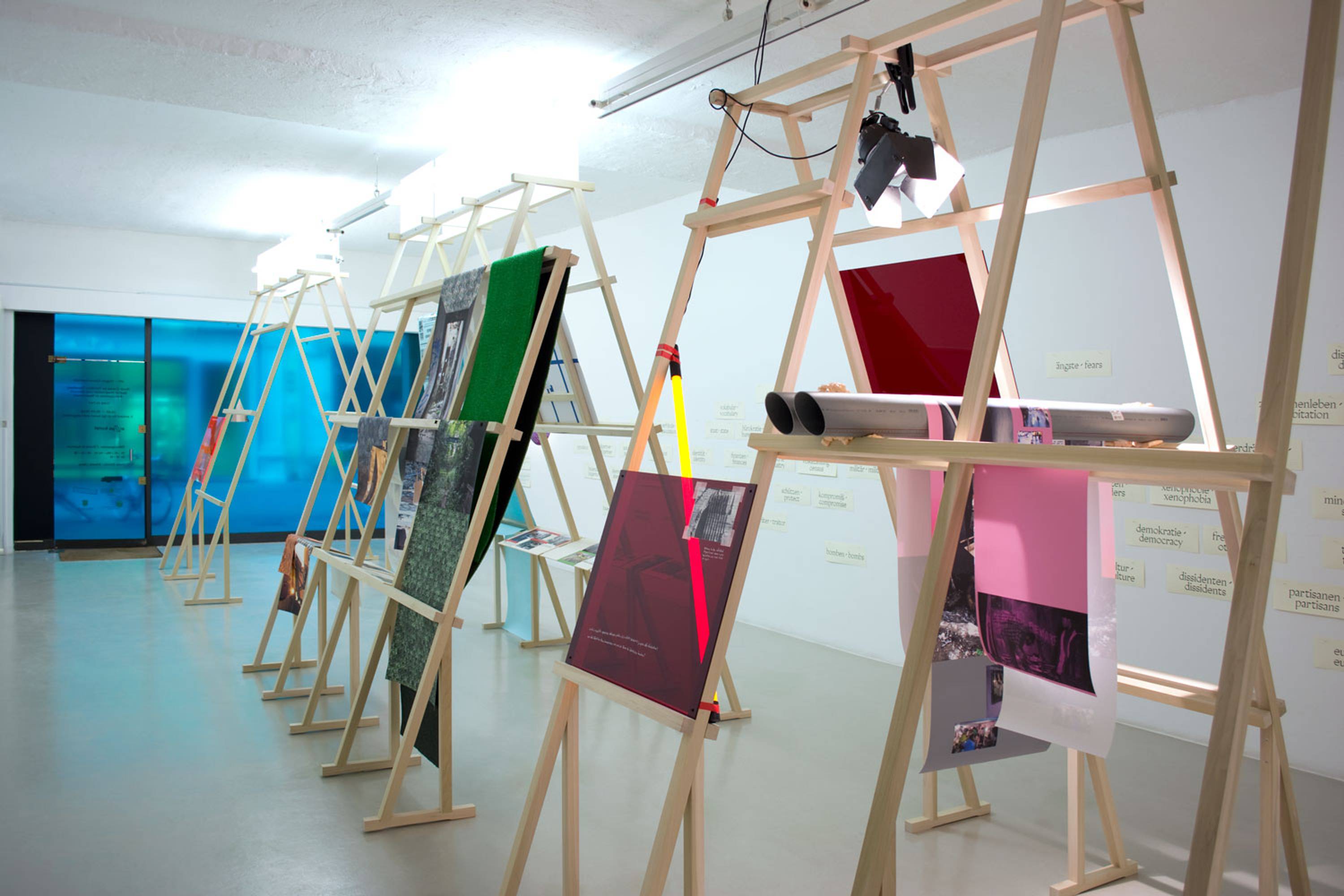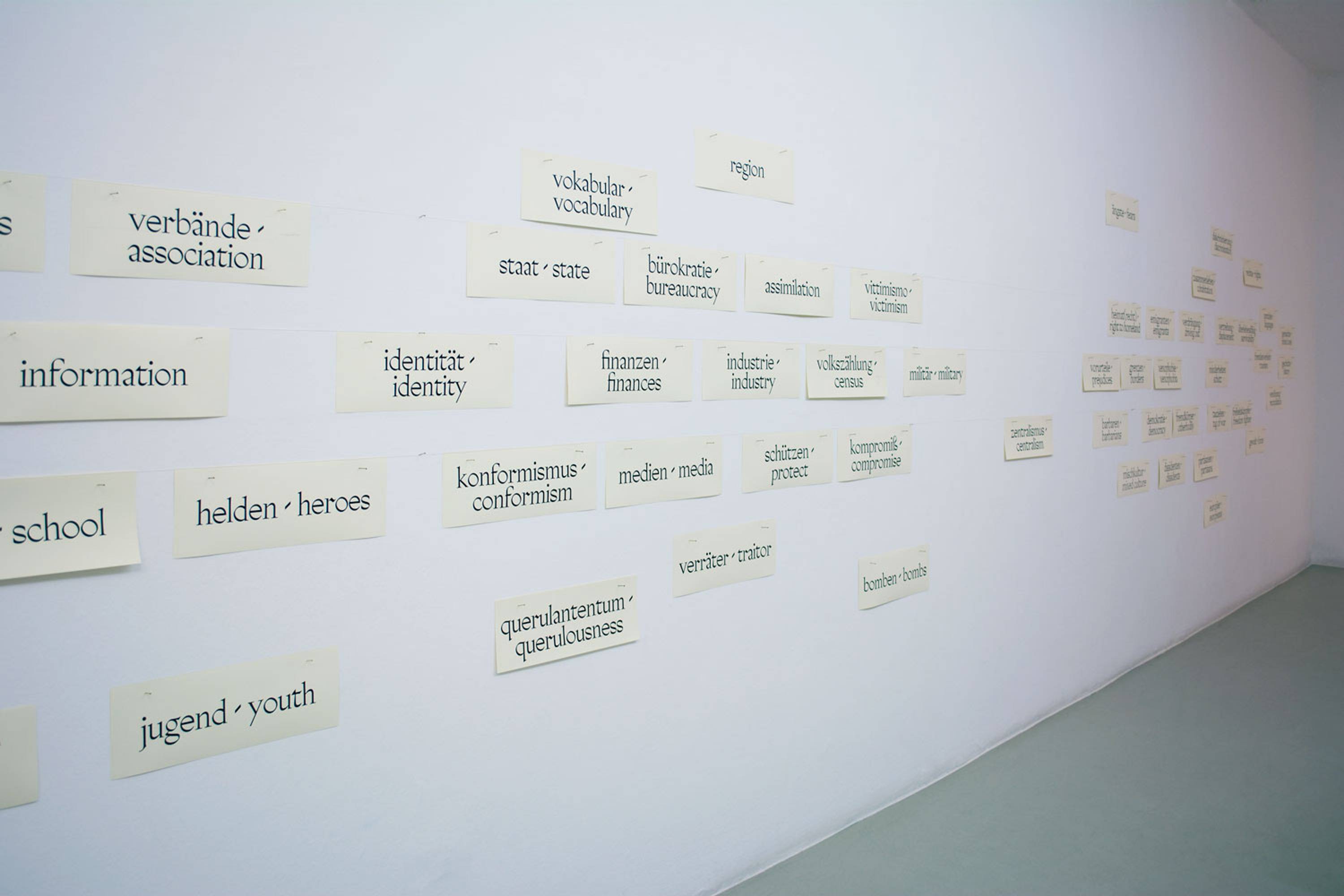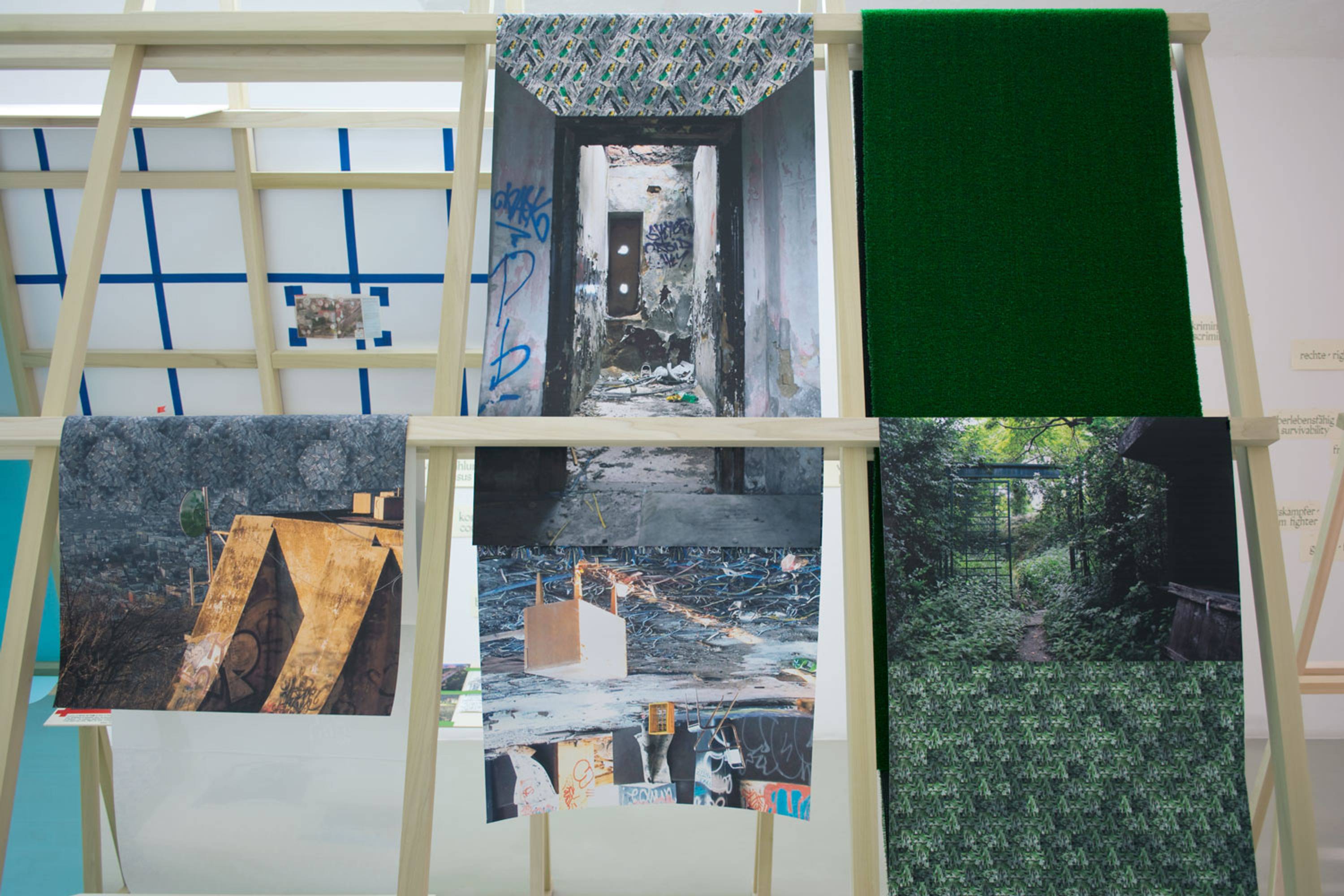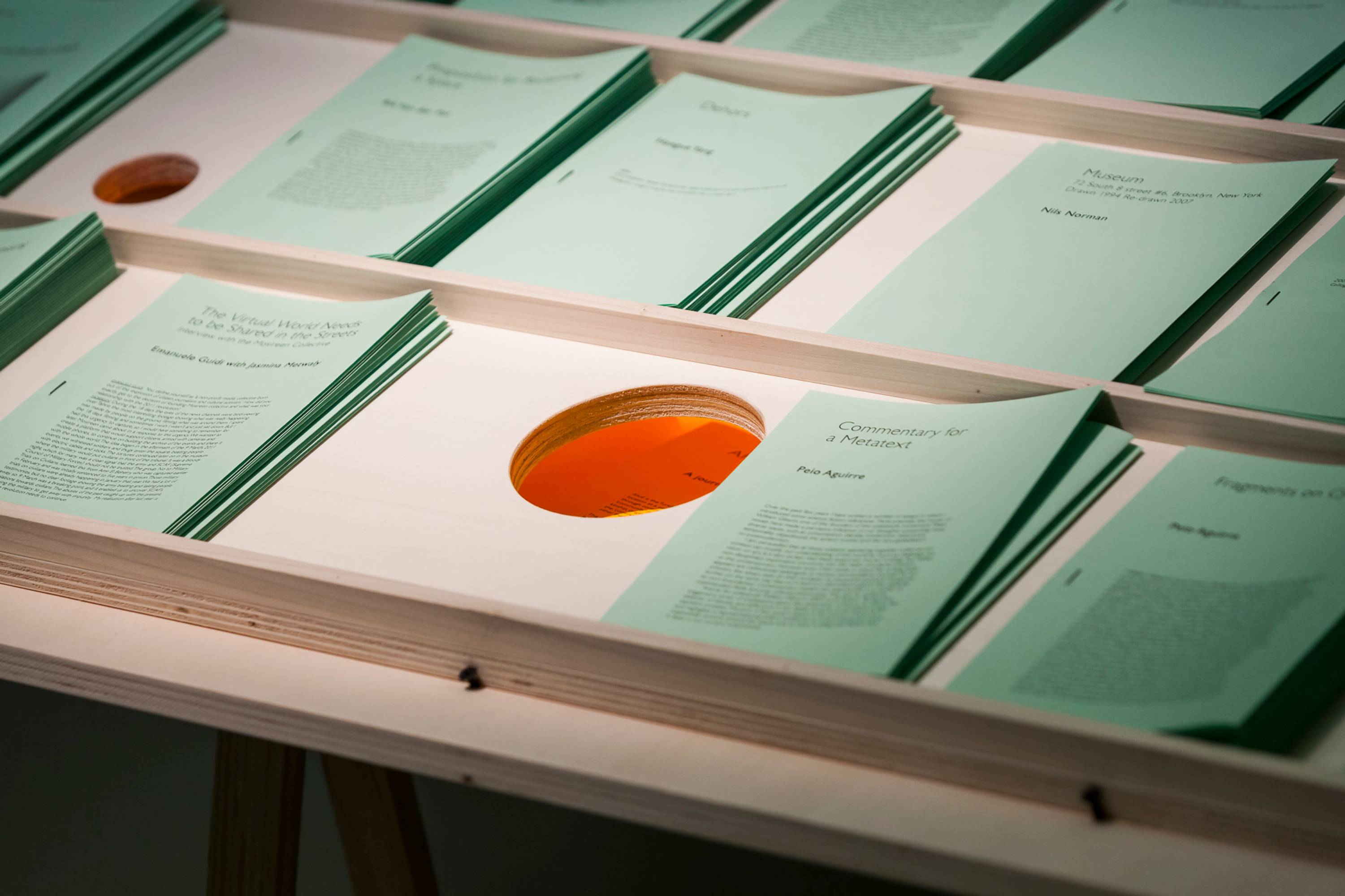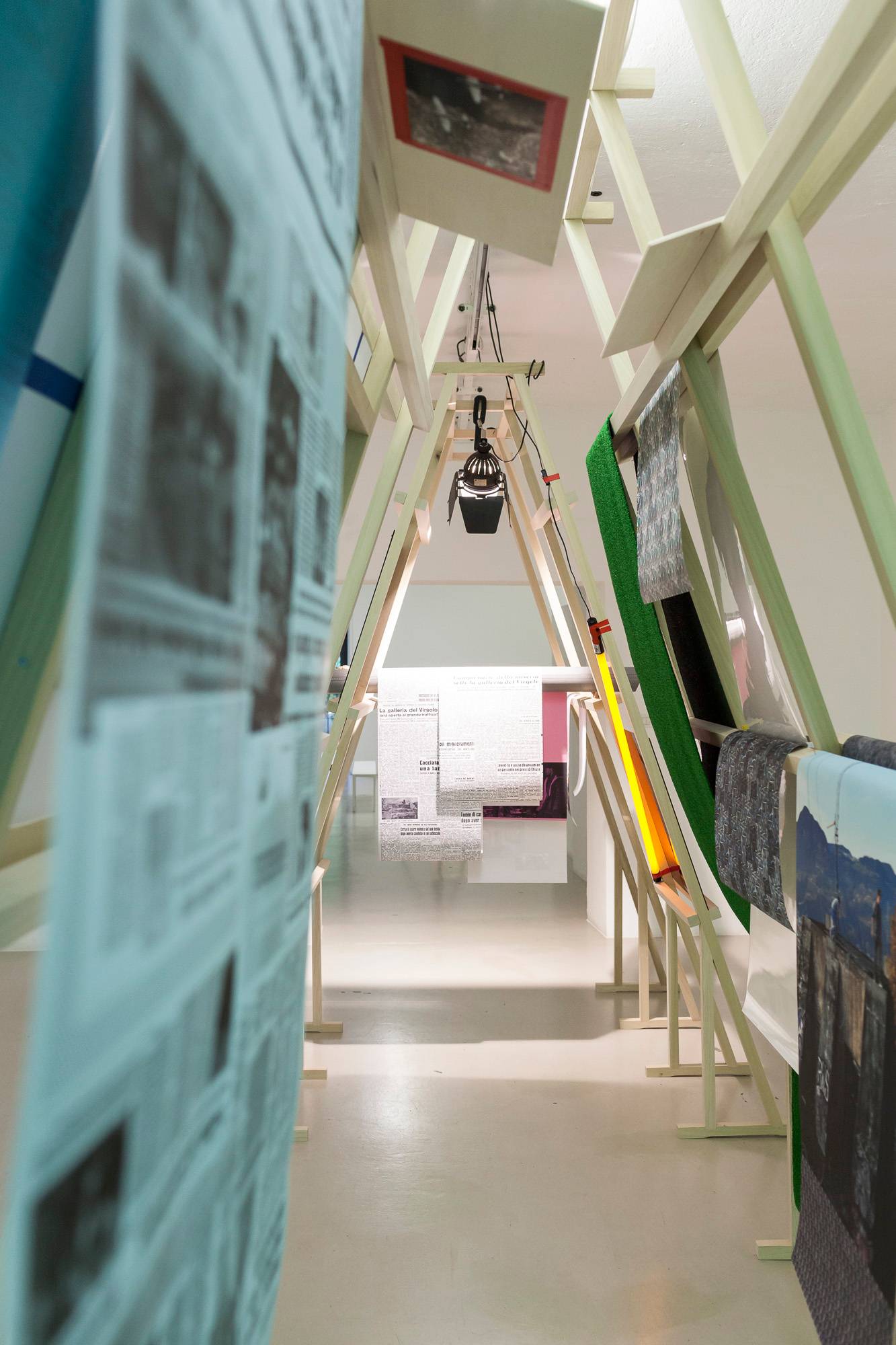VFI – Virgolo Future Institute (Such Claims on Territory Transform Spatial Imagination Into Obscure Anticipations of Repartition)CAN ALTAY
Opening 13 May 2016, 7 pm
A collaborative project by ar/ge kunst and Lungomare
VFI – Virgolo Future Institute (Such Territorial Claims Transform Spatial Imagination Into Obscure Anticipations of Repartition) is the latest and final iteration of Can Altay’s one-and-half year residency in Bolzano, a collaborative project by ar/ge kunst and Lungomare (October 2014 – July 2016).
For the duration of the project Altay has been conducting a study focussed on Bolzano’s complex relationship with the Virgolo, a nearby mountain that overlooks the city and has recently been the subject of a vigorous debate concerning its potential uses and developments.
Altay is now using the premises of ar/ge kunst for a three-month exhibition that continues the development of a prior series of public interventions that have employed different temporalities, acting as both observations on and contributions to the current debate. The works so far have included a two-week exhibition and a public debate at Lungomare (Such Territorial Claims), a four-week poster campaign in the city (Transform Spatial Imagination into), a two-hour performative gathering on the Virgolo and an itinerant, ongoing eight-month intervention in public space (Obscure), with the titles and contents of these works all leading up to the current exhibition. These public moments have posed a set of questions about territorial claims, the urban imagination and the experience of boundaries, notions that re-surface in Bolzano and many places today.
For the current exhibition Altay has set one ‘setting’articulated in two moments, both of which act as display, sculpture and editorial device. The first, resembling the shapes of a tunnel and a roof, forms the central body of the VFI. Making clear reference to the little-known anecdote of dwellers inhabiting the unfinished Virgolo tunnel during and after the Second World War, the installation gathers various types of ‘fragment’ collected during the residency, composing a principle line of inquiry around the issue of ‘inhabiting infrastructures’ – a central narrative from which different lines of research depart (‘who is allowed to claim public space, who is forced to inhabit infrastructure space?’ reads one of the posters of the campaign).
The second moment unfolds around Ahali, a journal that Altay has been publishing since 2007. This journal ‘for setting a setting’ is a growing collection of works, statements and voices from artistic and spatial practices. In the context of this exhibition Ahali is used as a tool for expanding the different subject matters that emerge from the Virgolo and placing them within a wider framework of cultural references and international cases. Rather than being seen as periodical markers, new issues of the journal are treated as hovering frames for matters of concern, with those introduced in this exhibition – ‘Inhabiting Infrastructures’, ‘Landscape of Desire’, ‘Alliance of the Radically Different’, ‘Tremors from Here and Elsewhere’ and ‘Instituting Uncertain Publics’ – effectively forging a link between the project and the publication.
Can Altay’s exhibition operates both as a tool and as a fiction; by founding an imaginary institute (VFI) on the basis of unofficial, hidden, unplanned uses, he composes an archaeology of desire that is able to suggest modes of looking at and addressing the future of the mountain and, by extension, the city. These can be taken as instances of a multitude of possible ways to tackle, as Altay himself says, ‘neo-liberal politics and its counter-hegemonies’.
